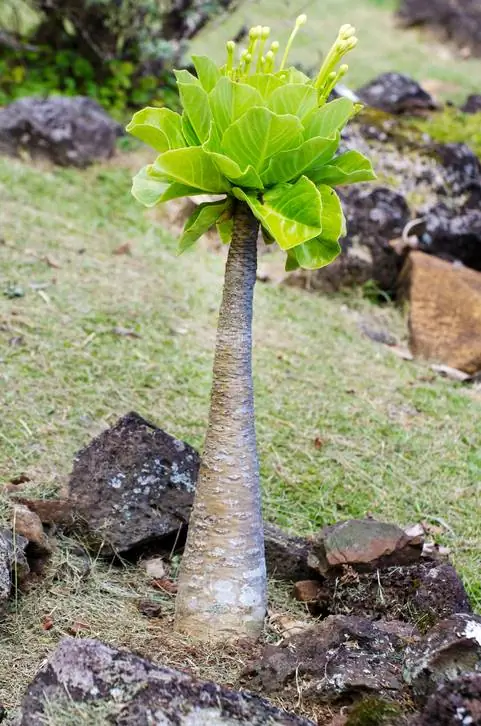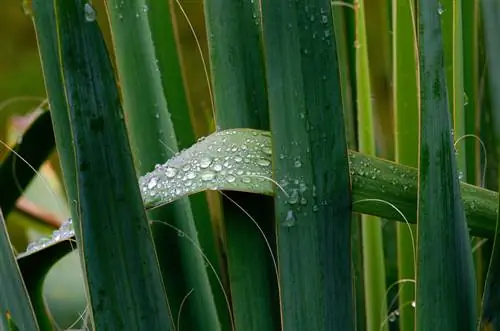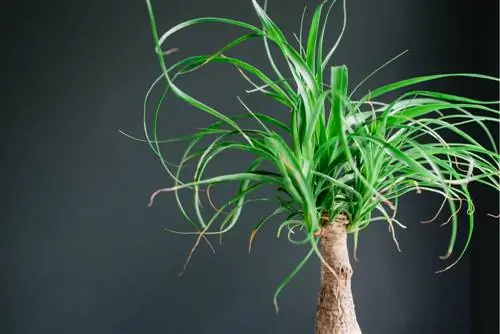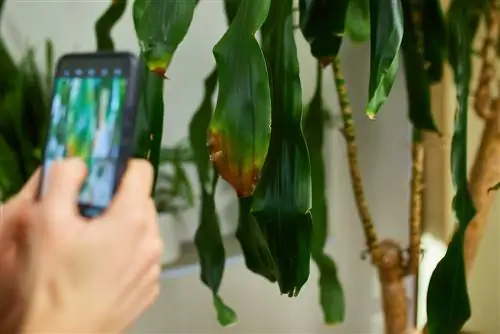- Author admin [email protected].
- Public 2023-12-16 16:46.
- Last modified 2025-01-23 11:20.
If the trunk of the Hawaiian palm becomes soft, this always indicates a care error. How to prevent a Hawaii palm tree from having a soft trunk and how you can save the plant if necessary.
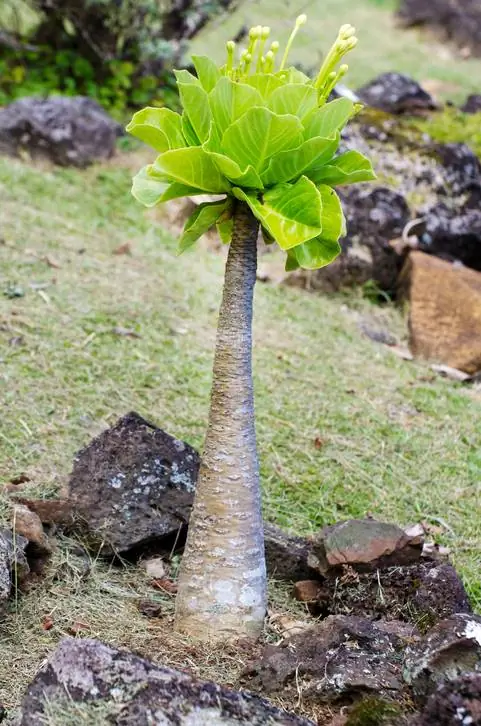
Why does the trunk of the Hawaii palm tree become soft and how can you prevent this?
If the trunk of a Hawaii palm tree becomes soft, this indicates a care error due to too much moisture in the substrate. To solve the problem, change the watering behavior, avoid waterlogging and place the plant in a semi-shady place.
Why does the trunk of the Hawaii palm tree become soft?
Hawaii palms are not palm trees, but succulents that belong to the bellflower family. These plants store water in their leaves. The worst care mistake is therefore too much moisture in the substrate.
A soft trunk always indicates that the Hawaii palm is too moist. It can no longer store water in the leaves, but stores it in the trunk. If this condition lasts longer, it becomes soft and bends downwards. The risk of the Hawaii palm dying is very high.
How to prevent a soft trunk
Like all succulents, a Hawaii palm should only be watered very moderately. Only water when the substrate has dried out several centimeters deep at the top.
You must never leave excess water in the saucer or planter.
Prevent waterlogging by adding a drainage layer at the bottom of the pot so that the roots of the Hawaii palm are never directly in the water.
Can the plant still be saved?
If you discover a soft trunk on your Hawaii palm, you can try to save the houseplant. But this only works if the trunk is not completely soaked.
Place the Hawaii palm in partial shade and stop watering completely. It will not harm the succulent if it is not watered for up to six weeks. She can use the stored water during this time.
If the substrate is very moist, it can also help to repot the Hawaii palm. Remove them from the pot and rinse off the old soil. Fill the container with fresh substrate (€16.00 on Amazon) and plant the Hawaii palm.
Tip
It is almost always a normal process for the Hawaii palm tree to lose its leaves in the summer. If it gets yellow leaves in winter, this could be an indication of too much moisture. Sometimes spider mites are also responsible.

